90
/ 100
Hi there!
Do you know that the evolution of technology has created a new avenue for entrepreneurs to exchange books? Many of you must be unaware of it. But let us tell you something important: with technological advancements comes environmental awareness.
The rise of the second-hand marketplace is further proof. These marketplaces are easily accessible and affordable. Reports state that the global market for second-hand books is expected to see a band of growth of 6.4% between the years 2024 and 2030.
The demand for selling platforms that allow merchants to sell their used books is constantly rising. Amazon, eBay, and platforms like BookScouter and Nearbook are also utilizing this trend.
Are you interested in starting a second-hand book-selling app? If yes, let’s begin buying and selling books with a practical idea.
What is a Second-Hand Book Selling App?
A second-hand book-selling app is a mobile or web-based technology that allows anyone to buy or sell any issued book easily. It allows users to post books they do not wish to keep for sale while providing the opportunity to buy books they like.
To maximize customer satisfaction, e-commerce app development implements features like title search for easy browsing, payment methods, and shipping management to ensure ease of access for book lovers.
How Does Second Hand Book Selling App Work?
Before we discuss how to start a second-hand book selling app, you need to know how the application works.
- Sign Up/Login: Users can create accounts or access the used book-selling app.
- Browse/Search: Buyers can search for books using keywords or search through categories using genre, price, or condition filters.
- View Listings: Information related to the book, such as photographs, descriptions, seller ratings, etc., is displayed by the user using the book-selling app.
- Contact Seller/Purchase: Buyers can contact sellers through messages, and books can be bought through secure payment gateways.
- Shipping/Delivery: Buyers can either pick up the books locally or, depending on the options of the used book-selling app, sellers can send them.
- Review/Rate: Sellers and buyers can give or receive feedback and reviews, which helps build trust in the community.
- List Books (Sellers): Sellers manage their sales out of the site and can add books using descriptions, photos, and prices.
- Manage Orders: This buy-and-sell books app helps buyers track purchased items while sellers complete the orders.
5 Popular Second-Hand Book Selling Apps
To develop an online marketplace platform with a successful presence in the leading market. To help you in the genre make your stand among the leaders of buy-and-sell book apps, we have covered a few second-hand book-selling apps that you need to learn about for your competitor research.

1. Nearbook
Nearbook is another location-focused online book-selling app for buying and selling second-hand books. It allows you to check what books are nearby and easily purchase them. Interestingly, Nearbook started as a pitch a student presented on Shark Tank India and received investment money, which is very promising when it comes to connecting book lovers worldwide.
2. Etsy:
Etsy is a global e-commerce platform that specializes in handmade, vintage, and unique factory-manufactured goods. It was founded by Robert Kalin, Chris Maguire, Haim Schoppik, and Jared Tarbell in Brooklyn, New York 2005. So, if you’re interested in developing an online book-selling app like Etsy, you must connect with a buying and selling app development company.
3. BookScouter:
BookScouter is an e-commerce platform available on both Android and iOS that allows comparison shopping for used books. Founded in 2007, it is ranked #5828 in all categories and #429 in productivity in the US Google Play Store as of November 2024. It is an excellent app for selling books that will help you start a second-hand book selling app.
4. Amazon:
Established in 1994, Amazon is an online retailer selling new and second hand books on its mobile iOS and Android apps founded by Jeff Bezos that has over 50 cr+. Apps like Amazon are popular for buying second-hand books, although user ratings and download figures are unspecified.
5. eBay:
eBay, launched in 1995, is a worldwide e-commerce platform for the customer-to-customer and business-to-customer sales. Among many things sold, there is a specific range of used books.
The sell second-hand books app can be reached through its website and mobile applications on Android and iOS devices. Hence, you need to connect with a leading second-hand book-selling app development company to build an app like
Market Stats On Second Hand Book Selling App
- The value of the global trade and exchange app book market in 2022 was around $22.78 billion, while in 2021, it was pegged at $24.03 billion, which indicates a 5.5% year-on-year growth.
- The consumer market for used books also showed significant growth in 2022, with 81% of customers above 18 claiming that they prefer buying books over fashion.
- With a CAGR of 6.6%, the market is expected to mature to $45.53 billion by the closure of 2032
- In 2022, the North American second-hand market will account for $6.68 billion, or 27.8% of the global market.
- Representing 63% of the global second-hand book market, the adult segment is pegged at $15.14 billion.
- Surpassing $1 billion for the first time by 2032, India’s share in the global student book exchange market is projected to increase at a CAGR of 6.80%.
Why Do Entrepreneurs Want to Invest in Building a Book Exchange App?
The popularity of second-hand bookstores is soaring. This creates an attractive opportunity for entrepreneurs to invest in a sustainable and viable flagship business. Investing in a book exchange app can prove to be very profitable due to:
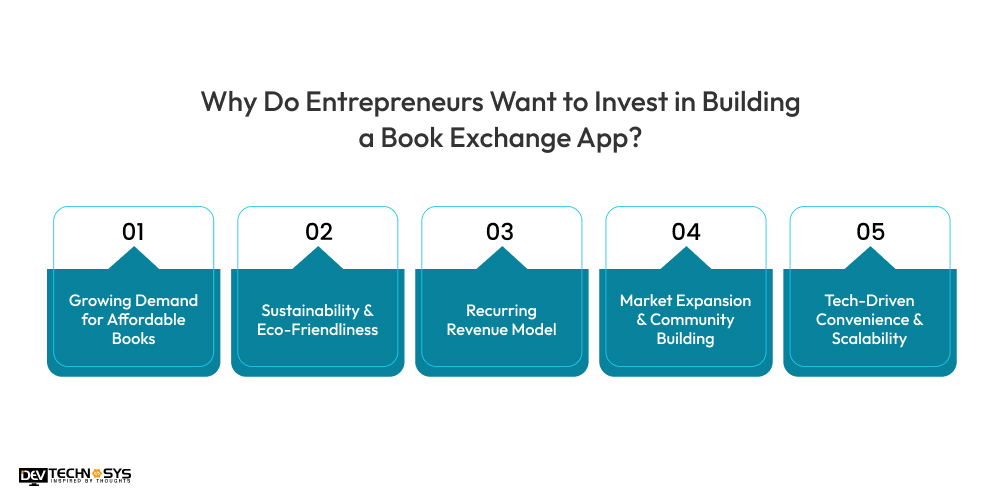
1. Growing Demand for Affordable Books
Budget users, including students, bookworms, and knowledge enthusiasts, always look for economical reading materials. A second-hand bookstore makes books accessible for readers at an affordable price while bridging the gap between buyers and sellers.
2. Sustainability & Eco-Friendliness
Books are sold and purchased with the intention of reusing them, so less paper goes to waste. For eco-conscious people, this business model enables alignment with sustainability goals, making it a wise investment opportunity in a book resale marketplace.
3. Recurring Revenue Model
Listing fees, advertisements, and subscription plans monetize the platform while the user enjoys using the book resale marketplace for free. For most book lovers, this monetization strategy guarantees strong revenue.
4. Market Expansion & Community Building
Students, avid readers, and collectors can exchange books on the same platform. If social features like comments, reviews, and discussion boards are added, the book resale marketplace can easily become more appealing to learners.
5. Tech-Driven Convenience & Scalability
Users of online book exchanges can benefit from AI recommendations, easy payment methods, and a user-friendly design. This gives entrepreneurs a wider global market to expand their businesses.
6 Stages to Develop a Second-Hand Book Selling App
Now, the time has come to follow the guide to start a second-hand book selling app. In this section below, we have covered a process to develop a second-hand book-selling app, which you need to note down for a thriving entrance.
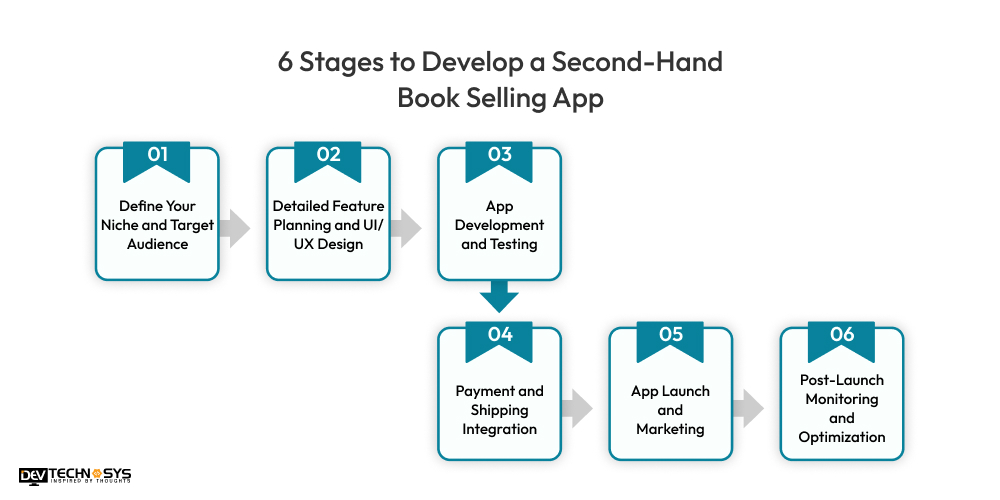
1. Define Your Niche and Target Audience:
This is the first stage of starting a second-hand book-selling app, and you need to focus on monitoring these details. It’s important to build up a demographic profile and user behavior to share with the android app development company.
They’ll have access to the vision that helps shape and communicate the desired outcomes, tailoring engine second-bookselling marketplace development components strategies over time.
Would it emphasize academic textbooks, rare books, fiction, or a combined collection? It’s also vital to understand whether the target audience to the target audience s is students, collectors, or avid readers for your upcoming retail & resale app.
2. Detailed Feature Planning and UI/UX Design:
It is the second stage to start a second hand book-selling app. You should work closely with the second-hand book-selling marketplace development company to design core features. Some features of the best app to sell books include user registration and book listing.
Searching and filtering options, secure payment gateways, and intra-app messaging for communication between the buyer and seller. User Interface (UI) and User Experience (UX) should be given the highest attention. Users should be able to navigate easily, and the visually appealing set design and branding should visually resonate with their identity.
3. App Development and Testing:
We are almost there to start a second-hand book selling app with the help of a buying and selling app development company per your guidelines. This includes user interfaces to the system, coding the logic at the back end, populating the database, and writing the function to link the best app to sell books externally.
Your hired marketplace development company will work on the bugs, especially those that prevent the system from functioning correctly, which should be fixed carefully through testing.
Ensure the second-hand book-selling platform development works well on different devices and operating systems. Great care should be taken to protect the personal information of the users as well as their financial transactions through security testing.
4. Payment and Shipping Integration:
To start a second-hand book selling app with new trends and technologies without putting much effort into the key, you need to connect with a second-hand book-selling platform development team. Yes, you heard it right.
Only an experienced marketplace development company will be able to work on implementing other modes of payment, which will allow for greater flexibility in the purchase of the book. Overhead costs, shipping and retaining a tracking number must always be included. Allowing for other payment modes will increase user trust in the e-commerce app development.
5. App Launch and Marketing:
To create a second-hand book-selling app, you need to know that the digital book marketplace is sufficiently tested and ready; your next move is to launch it on the corresponding app stores for iOS and Android. Additionally, you must build a marketing plan to capture users’ attention.
Your hired marketplace app development company: Build awareness of your best book-selling app using social media, online marketing, influencer advertising, and collaborating with relevant communities. To start a second-hand book selling app, ensure proper onboarding processes are supported with accompanying documents and guides.
6. Post-Launch Monitoring and Optimization:
Last but not least, the stage to start a second-hand book selling app that checks used book marketplace performance, user engagement, and shifts within the market. Study the user data to find gaps that need adjustments and proceed to modify the best book-selling app where needed.
Your marketplace app development company will help regularly maintain the application with new enhancements, bug resolutions, and updates related to security. Build a community around your users, assist them, and offer exceptional customer service to encourage them to stick around and develop relationships with them.
Key Features to Successfully Create a Second-hand Book Selling App
You must be confused about how to decide on features, but don’t worry—we have your back. Here, we have covered almost every essential and advanced feature that you need to add to your used book marketplace platform.
1. Buyer Panel:
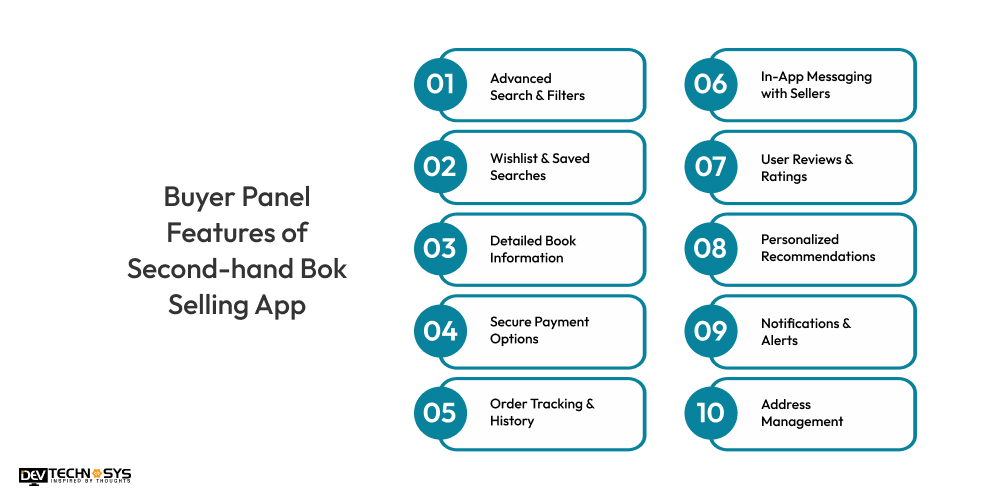
i. Advanced Search & Filters:
This online second-hand book selling app allows users to refine their searches by genre, author, ISBN, condition, and price, ensuring they quickly find the desired books.
ii. Wishlist & Saved Searches:
Buyers save favorite books and set alerts for availability, enabling timely purchases of sought-after items from online second-hand book selling apps.
iii. Detailed Book Information:
Access comprehensive book details, including descriptions, reviews, editions, and seller ratings, aiding informed decisions with the best second-hand book-selling app
iv. Secure Payment Options:
With the best second-hand book selling app, multiple secure payment gateways ensure safe transactions, providing buyers with flexible and trusted payment methods.
v. Order Tracking & History:
You can track purchased books’ shipping status and view past orders, maintaining transparency and purchase records from the app to sell books.
vi. In-App Messaging with Sellers:
From the app to selling books, users can directly communicate with sellers for inquiries, negotiations, or additional book information, facilitating smooth transactions.
vii. User Reviews & Ratings:
With an app for selling books, users can read and write reviews of sellers and books, contributing to community trust and informed buying decisions.
viii. Personalized Recommendations:
Receive book recommendations based on browsing history and preferences, discovering new and relevant titles with an app for selling books.
ix. Notifications & Alerts:
Get real-time notifications for price drops, new listings, and order updates, staying informed about relevant activity with the help of an app for selling old books.
x. Address Management:
With the app for selling old books, users can store multiple shipping addresses, making it easy to deliver books to various locations.
2. Seller Panel:
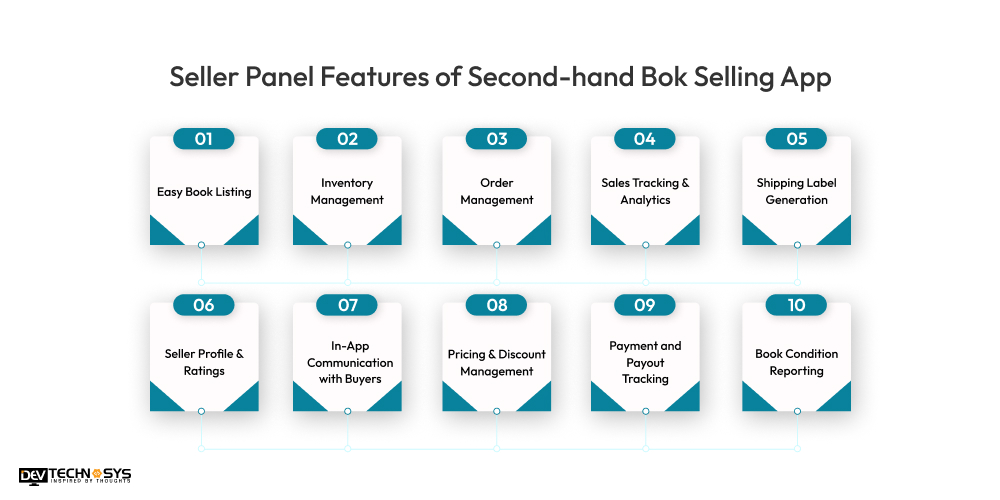
i. Easy Book Listing:
A resale book store app lets sellers quickly list books with detailed descriptions, images, and condition reports, attracting potential buyers with accurate information.
ii. Inventory Management:
With the help of a resale book store app, you can track listed books, manage availability, and update listings as needed, maintaining accurate inventory records.
iii. Order Management:
Vintage book trading platforms offer sellers a view and manage incoming orders, process shipments, and update order statuses, ensuring efficient order fulfillment.
iv. Sales Tracking & Analytics:
A vintage book trading platform can help you monitor sales performance, track revenue, and analyze sales trends, gaining insights into selling activity.
v. Shipping Label Generation:
A pre-owned book exchange app allows sellers to generate shipping labels directly from the app and streamline the shipping process.
vi. Seller Profile & Ratings:
Maintain a seller profile with ratings and reviews, building trust and credibility with potential buyers with the help of a pre-owned book exchange app.
vii. In-App Communication with Buyers:
The book commerce app facilitates smooth transactions by allowing you to respond to buyer inquiries, negotiate prices, and provide additional book information.
viii. Pricing & Discount Management:
With the help of an old book resale hub, sellers can Set prices, offer discounts, and manage pricing strategies to optimize sales and attract buyers.
ix. Payment and Payout Tracking:
They track earned funds and monitor payout statuses, ensuring accurate financial management with the old book resale hub.
x. Book Condition Reporting:
Sellers can gain access to refurbished bookshops by accurately describing the condition of the books, which can avoid disputes and build customer trust.
3. Admin Panel:
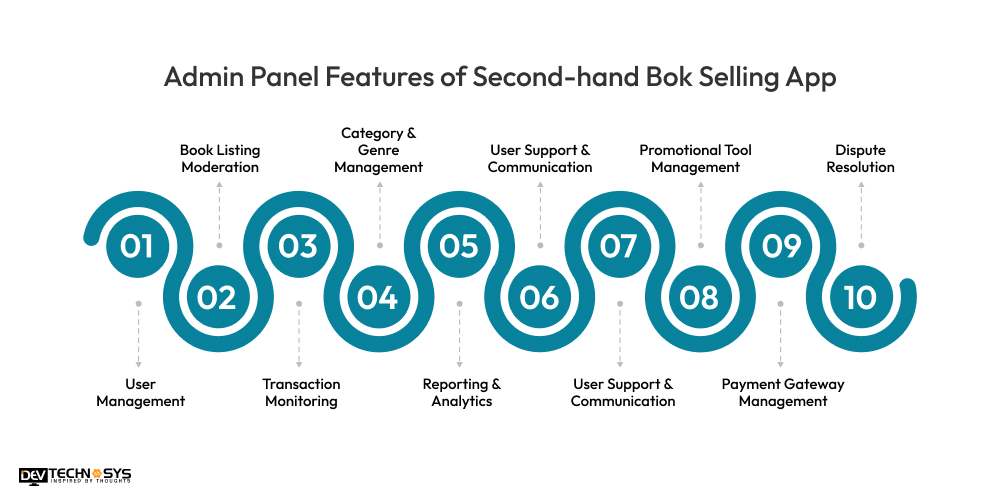
i. User Management:
Manage user accounts, monitor activity, and resolve user disputes, ensuring a safe and reliable book swap & sell app.
ii. Book Listing Moderation:
Review and approve book listings, ensuring compliance with book swap & sell app guidelines and quality standards.
iii. Transaction Monitoring:
Monitor transactions, detect fraudulent activity, and ensure secure payment processing, maintaining sustainable bookstore app integrity.
iv. Category & Genre Management:
With a sustainable bookstore app, Manage book categories and genres, organizing the platform for easy navigation and discovery.
v. Reporting & Analytics:
Generate reports on platform activity, sales trends, and user behavior, gaining insights for book resale marketplace optimization.
vi. User Support & Communication:
Handle user inquiries and provide platform support, ensuring a positive user experience with the book resale platform.
vii. Platform Policy Management:
With the help of the book resale marketplace, Update and manage platform policies and guidelines, ensuring a safe and fair environment.
viii. Promotional Tool Management:
Manage promotions and advertising with the best-used book app to increase sales and eco-friendly bookstore visibility.
ix. Payment Gateway Management:
Manage payment gateway integrations and monitor transaction success, ensuring smooth financial operations.
x. Dispute Resolution:
Mediate and resolve disputes between buyers and sellers, maintaining e-commerce app development fairness.
How Much Does It Cost to Develop A Second-Hand Book Selling App?
The cost to start a second-hand book selling app includes several elements that will significantly impact the final price of the development. It is not a fixed-price service, meaning that depending on how complex and feature-rich you want your service hourly rate of an education app development company, the range can be from $10,000 to $30,000 or more.
Here is a list and explanation of the most essential elements that the cost to start a second-hand book selling app will be based on:
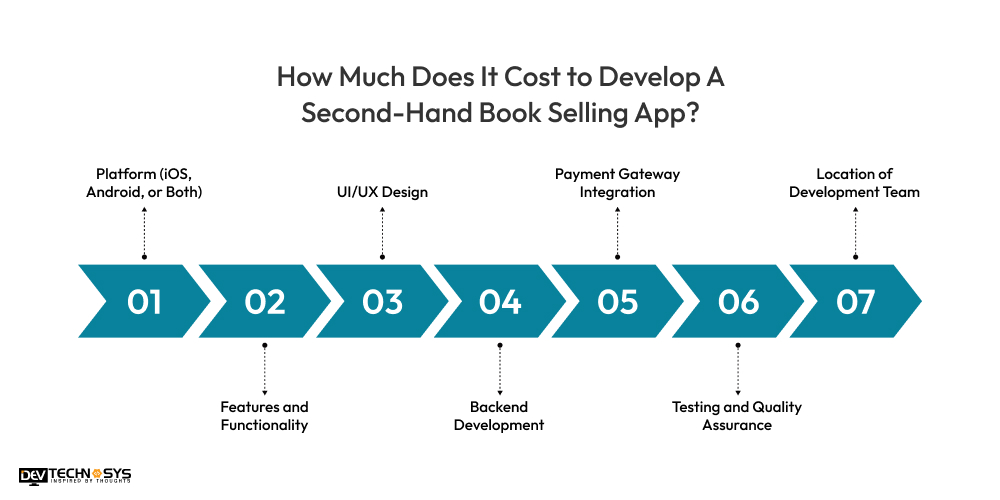
1. Platform (iOS, Android, or Both):
When developing for both platforms, the cost to start a second-hand book selling app tends to increase significantly compared to a single online auction platform.
The budget is affected by the presence of a dedicated education app development company vs. cross-platform frameworks. The cost may easily double when developing both online book exchange platforms.
Platform |
Estimated Cost Range |
| iOS Only | $5,000 – $15,000 |
| Android Only | $5,000 – $15,000 |
| Both (iOS & Android) | $10,000 – $30,000 |
2. Features and Functionality:
Compared to gated features, user sign-up, book listing, and search box options are cheaper, and features such as in-app chat, safe payment systems, instant alerts, and sophisticated search engines drastically increase the price. Sophisticated functionalities raise the cost to develop an online marketplace website.
Feature |
Estimated Cost Range |
| Basic Features (Sign-up, Listing, Search) | $2,000 – $5,000 |
| In-app Chat | $1,000 – $3,000 |
| Secure Payment System | $3,000 – $8,000 |
| Instant Alerts (Push Notifications) | $1,500 – $4,000 |
| Advanced Search Engine | $2,000 – $6,000 |
3. UI/UX Design:
Standard layouts are the easiest and cheapest to create, while more elaborate custom-tailored visual designs and user experiences require more time and skill to implement. The total cost to start a second-hand book-selling app will rise for advanced features such as tailored user interactions, intricate graphics, and intensive usability testing.
Design Type |
Estimated Cost Range |
| Standard Layout | $1,000 – $3,000 |
| Custom Tailored Design | $3,000 – $8,000 |
| Intensive Usability Testing | $1,000 – $3,000 |
4. Backend Development:
The backend infrastructure’s server configuration, database, and API integration all matter significantly. It lowers the cost to start a second-hand book selling app to have a powerful, scalable backend that can support many users and transactions.
The cost to build a second-hand book selling app is noted by how many gateways are used, their complexity, and how restrictive the payment integration is.
Backend Component |
Estimated Cost Range |
| Server Configuration | $2,000 – $5,000 |
| Database Setup | $1,500 – $4,000 |
| API Integration | $2,000 – $6,000 |
| Scalability Features | $3,000 – $7,000 |
5. Payment Gateway Integration:
Integrating secure payment gateways like PayPal, Stripe, or credit card processing requires careful implementation and security measures. The complexity of payment integration and the number of gateways used influence the cost to build a second-hand book-selling app. Secure payment integration is non-negotiable.
Gateway Type |
Estimated Cost Range |
| Basic Integration | $1,000 – $3,000 |
| Multiple Gateways | $3,000 – $6,000 |
| High-Security Compliance | $2,000 – $5,000 |
6. Testing and Quality Assurance:
To deliver a seamless product, rigorous multi-platform and multi-device testing needs to be enforced on auction app development. Due to the app’s quality needs, these processes are expensive to integrate into a mobile application. Any Testing and QA ensure a reliable product, which will definitely affect the overall cost to build a second-hand book-selling app.
Testing Type |
Estimated Cost Range |
| Basic Functional Testing | $1,500 – $3,000 |
| Automated Testing | $2,000 – $5,000 |
| Cross-Platform Testing | $2,000 – $4,000 |
| Security & Performance Testing | $2,000 – $6,000 |
7. Location of Development Team:
Different regions of the world incur unique costs to develop a second-hand book selling app due to the location of the commerce exchange app development team. For instance, North America and Western Europe charge more than Eastern Europe or Asia. This discrepancy in the location of the second-hand shopping app developers greatly influences the hourly wage.
Region |
Hourly Rate |
| North America/Western Europe | $50 – $150 |
| Eastern Europe | $30 – $80 |
| Asia (India, Southeast Asia) | $20 – $50 |
Learning the intricacies of budget and evaluating requirements is crucial when it comes to develop a second-hand book selling app. To reduce costs, prioritize essential features and a simplistic user interface. Reputable development companies can meet these goals without sacrificing quality and staying within cost to develop a second-hand book selling app.
How Does a Second-Hand Book Selling App Make Money?
A monetization model is essential if you want to build an app like Carousell or any second-hand booking app. Connecting buyers and sellers on platforms for buying and selling second-hand books enables the creation of revenue-generating strategies. Here are five strategies for their revenue generation channels on this buy-sell-trade app.
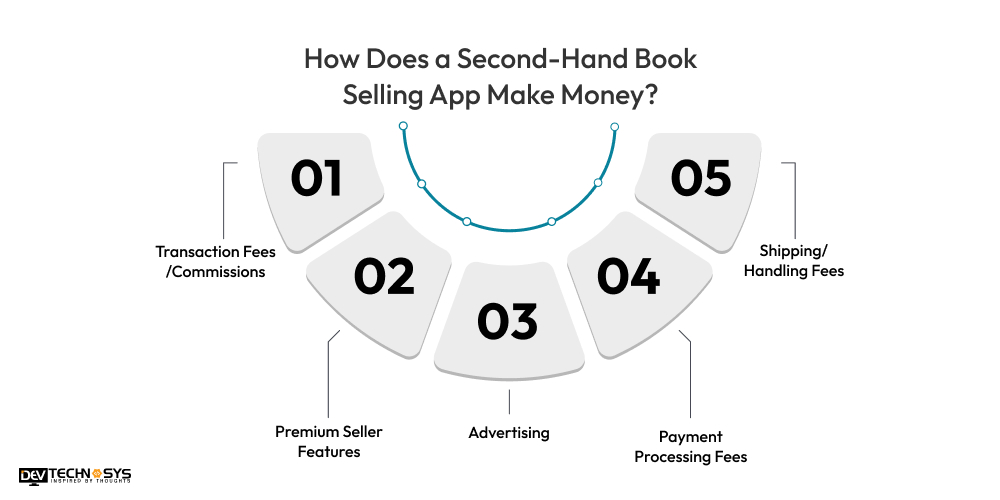
1. Transaction Fees/Commissions:
One of the primary sources of revenue is charging a commission fee as a percentage of the sales price. This payment, which the seller makes once they earn money on the buy-sell-trade app, ensures that charging this fee will provide income equal to the activity on the platform.
2. Premium Seller Features:
a seller of enhanced analytics and enhanced listing visibility or enhanced search placement or associates subscriptions with these services. Ultimately, these enabled users to request the services for maximum behavioral patterns to help aid business growth with on-demand app development.
3. Advertising:
Placing ads targeted towards users within the peer-to-peer marketplace ecosystem can be monetized. Digital thrift stores with advertising models may also include ads using e-readers, book accessories, or other related services, providing additional revenue opportunities.
4. Payment Processing Fees:
While integrated payment gateways enable seamless payments, some swap-and-sell apps may incorporate a markup on the payment processor’s base business app development cost. This will help cover the operational second-hand book selling app development costs related to payment processing.
5. Shipping/Handling Fees:
They might allow a certain fee to be paid for premium shipping, particularly if they have partnered with shipping companies for referral fees. Alternatively, they could allow certain platforms to sponsor shipping fees. This is an amazing and cost-effective way to help you generate ROI on your second-hand book selling app cost.
In A Nutshell!
Now, you can create a mobile app to sell second-hand books. As a top marketplace app development company, Dev Technosys knows the steps to build successful second-hand book selling apps. We have elaborated on various cost and development determinants so you can make educated choices.
You get the best e-commerce platform developers, the latest technology, and extensive experience when you work with us. Let Dev Technosys help you build your dream digital marketplace and connect with book lovers while scaling your business. Connect with our team and get affordable second-hand book selling app development costs.
Frequently Asked Questions
Q1. What Is The Second-Hand Book Selling App Development Cost?
The second-hand book selling app development costs range from $10,000 to $30,000 because of all complexity-related expenses, ui/UX designs, and feature designs. Other factors are choice of platform, middleware, and server-side second-hand book selling app development cost.
Q2. How Long Does It Take To Build a Second-Hand Book Selling App?
The average bidding and selling app development time ranges from 3 to 9 months, which is determined by the complexity of the shopping and selling hub, the feature set, and how quickly the online bargain platform development team works. Testing, revisions, and retesting significantly increase the duration.
Q3. Why Choose Dev Technosys to Build a Second-Hand Book Selling App?
Dev Technosys offers experienced developers, robust portfolios, and client-centric approaches. Our expertise in marketplace app development ensures a quality, feature-rich, second-hand bookstore delivered within agreed timelines and budgets.
Q4. What Are The Benefits To Build a Second-Hand Book Selling App?
- Connects buyers and sellers, expanding the book market.
- Provides a convenient bargain book bazaar for finding rare or used books.
- Generates revenue through commissions and premium features.
- Promotes sustainability by reusing books.
Q5. How Can You Monetize Second-hand Book Selling App Development?
- Charge transaction fees/commissions on each sale.
- Offer premium seller features for enhanced visibility.
- Display targeted advertisements within the bargain book bazaar.
- Implement payment processing or shipping fees.
- Affiliate marketing with related businesses.







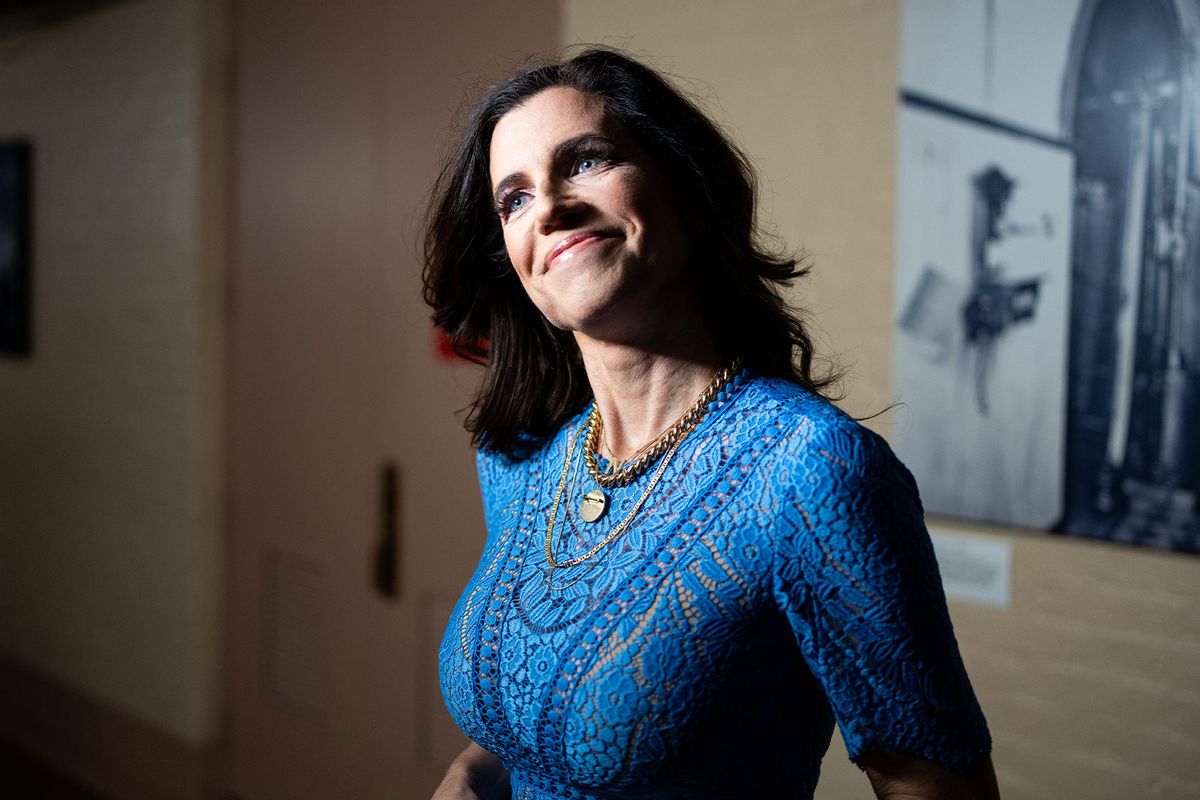


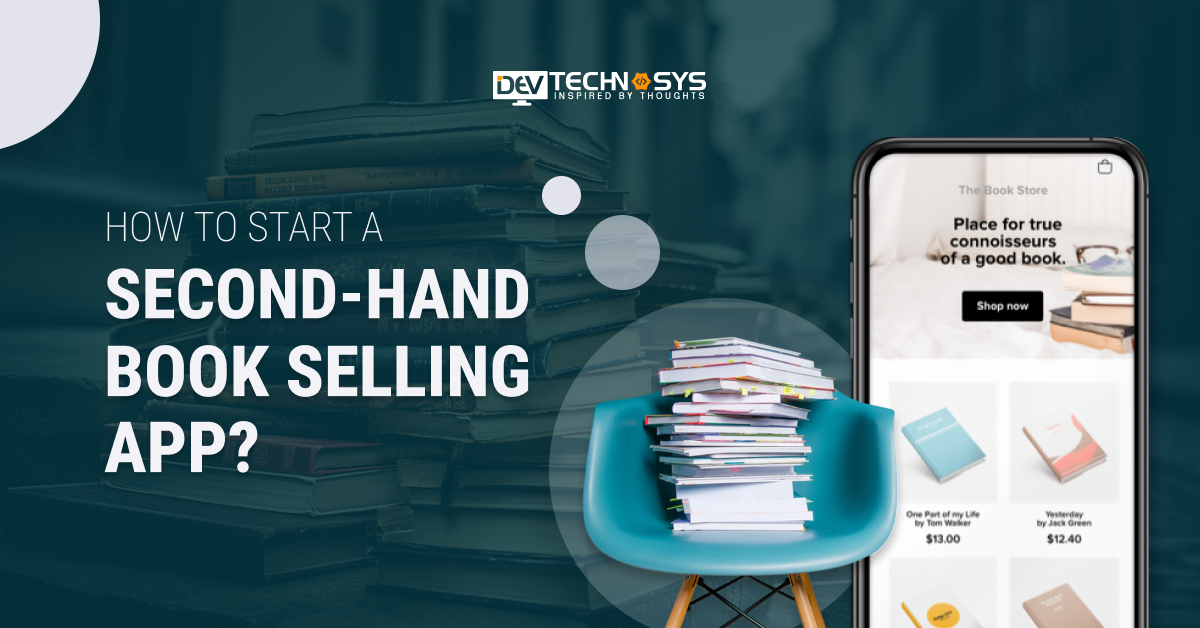




.png)






Discussion about this post